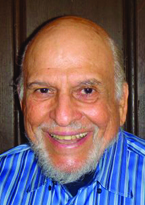Overcoming Hidden Biases
 On the anniversary of Martin Luther King Jr.’s assassination on April 4, 1968, an unintended consequence of the Civil Rights movement still gets little attention. The movement so transformed the way we thought about the relationship between blacks and whites that many white Americans became ashamed to admit to having a bias toward their fellow citizens who were black.
On the anniversary of Martin Luther King Jr.’s assassination on April 4, 1968, an unintended consequence of the Civil Rights movement still gets little attention. The movement so transformed the way we thought about the relationship between blacks and whites that many white Americans became ashamed to admit to having a bias toward their fellow citizens who were black.
In his 2010 book, The Hidden Brain, Shanker Vedantam indicates that we form biases in the early months and years of our life. He asserts that this process takes place independently of the parents’ influence. He states that children’s biases can develop no matter how hard a parent tries to shield his or her young ones from them.
I believe a major unfinished aspect of the Civil Rights movement is the need to face and overcome our own individual biases. We should realize that we need not be ashamed of biases formed years before we were able to keep them from our young, impressionable brains.
I personally have known that I’ve held a deep bias toward blacks for about sixty years. When I say this most people I know don’t believe it because they’re aware of my belief and activism in promoting civil and human rights. They may also know that I married Charlotte, an African-American woman, in 1953. We shared our biases with each other and we both had confidence that we could move past them.
Until recently, however, I wondered why I couldn’t get rid of my prejudice, which lies below the surface, until I see a black face as an anchor on TV. In a split second, I wonder why that face is black and not white. In another split second, I recognize that my initial perception is counter to my conscious belief system and I dismiss it as unwanted.
In a 2009 New York Times op-ed, Charles M. Blow referred to studies concluding that most whites have a hidden racial bias. Blacks were shown to have biases toward whites, though not as frequently. As Blow summarized it: “Researchers were able to ameliorate whites’ racial bias by teaching them to distinguish black peoples’ faces from one another. Basically, seeing black people as individuals diminished white peoples’ discrimination. Imagine that.”
After years of facing skepticism when I told people that my brain must be hardwired for a negative attitude, social scientists appeared to agree with me.
As a white man living in a black family for the last fifty-eight years, and having served people of color as a social worker in inner cities, I can attest to having prejudice toward blacks and learning how to act without it. The key, I think, is to fully acknowledge it. Malcolm Gladwell discusses this phenomenon in his 2005 book, Blink: The Power of Thinking without Thinking. He quotes a psychologist, Keith Payne, who writes that, “When we make a split-second decision, we are really vulnerable to being guided by our stereotypes and prejudices, even ones we may not necessarily endorse or believe.” Gladwell goes on to write that when one of our own hidden biases flashes before us, “we need to wait a beat before identifying the object in an unbiased way… the giant computer in our unconscious needs a moment to do its work.”
A look at how police confront racial bias is very informative. There is now a method of training, recently implemented by the New York Police Department, that helps officers recognize and overcome bias. It uses research that indicates that when police officers believe their lives are in danger, they become so frightened that they are no longer able to recognize body language. When facing a person of color, officers too often think stereotypically and believe that the person is carrying a gun or a knife and is ready to use it.
In the training, the officers are taught to wait a split second before determining whether or not to shoot. With repeated virtual training an officer is able to put his or her bias aside, recognize the person’s body language, and act appropriately. NYPD Commissioner Raymond Kelly recently announced a sharp decline in shootings by police officers. We can presume that the bias training was an important factor in that reduction.
After white people assure themselves that they aren’t under the control of their bias, they may feel free to be as critical of individuals whose skin color differs from their own as they feel is warranted. This could lead to much more honest and even rewarding experiences.
So now you know my story. I do hope you find it worthwhile, and I hope the day will come when we can share our stories, not out of a sense of confession, but out of a sense of satisfaction and a sense of victory over our demons.
